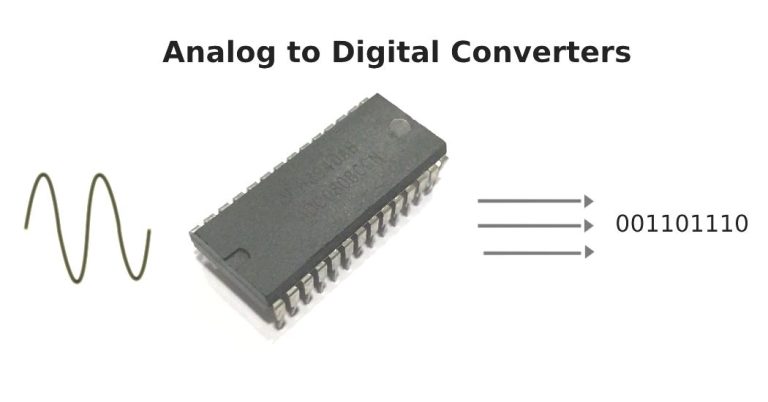The full form of ADC is Analog-to-Digital Converter, which is an electronic device that converts analog signals into digital signals. This process is essential in today’s digital world as it allows analog information to be processed, stored, and transmitted by digital devices. The ADC plays a critical role in many industries and applications, including telecommunications, computing, and industrial control systems.
The full form of ADC is Analog-to-Digital Converter
What is an Analog-to-Digital Converter (ADC)?
An Analog-to-Digital Converter (ADC) is a device that converts analog signals into digital signals. This is done by measuring the analog signals at regular intervals and converting these measurements into digital values. The resulting digital signals can then be processed, stored, and transmitted by digital devices.
How Does an ADC Work?
An ADC works by sampling the analog signal at regular intervals and quantizing the samples into digital values. The sample rate, or the number of samples taken per second, is a crucial factor in determining the accuracy of the digital representation of the analog signal. The higher the sample rate, the more accurate the digital representation will be.
The full form of ADC is Analog-to-Digital Converter
Applications of ADC
Analog-to-Digital Converters (ADCs) are widely used in a variety of applications, including:
- Telecommunications: ADCs are used in telecommunications systems to digitize analog signals for transmission and reception.
- Computing: ADCs are used in computers to convert analog signals, such as audio and video, into digital signals that can be processed and stored.
- Industrial Control Systems: ADCs are used in industrial control systems to convert analog signals from sensors and other devices into digital signals for processing and control.
- Medical Equipment: ADCs are used in medical equipment to convert analog signals from patients into digital signals for analysis and diagnosis.
Types of ADC
There are several types of ADC, including:
- Flash ADCs: Flash ADCs are the fastest type of ADC, but they are also the most complex and expensive.
- SAR ADCs: SAR ADCs are slower than flash ADCs but are simpler and more cost-effective.
- Delta-Sigma ADCs: Delta-Sigma ADCs are a type of ADC that uses a high-speed digital signal processing to achieve high accuracy.
- Dual-Slope ADCs: Dual-Slope ADCs are a type of ADC that uses a timing circuit to measure the time it takes for a voltage to charge or discharge.
The full form of ADC is Analog-to-Digital Converter
Conclusion
The full form of ADC, Analog-to-Digital Converter, is a vital device that plays a critical role in many industries and applications. From telecommunications to computing and industrial control systems, the ADC is essential in converting analog signals into digital signals that can be processed, stored, and transmitted by digital devices.
With its wide range of applications and the increasing demand for digital technology, the ADC is an important technology that will continue to play a critical role in the future.



0 Comments